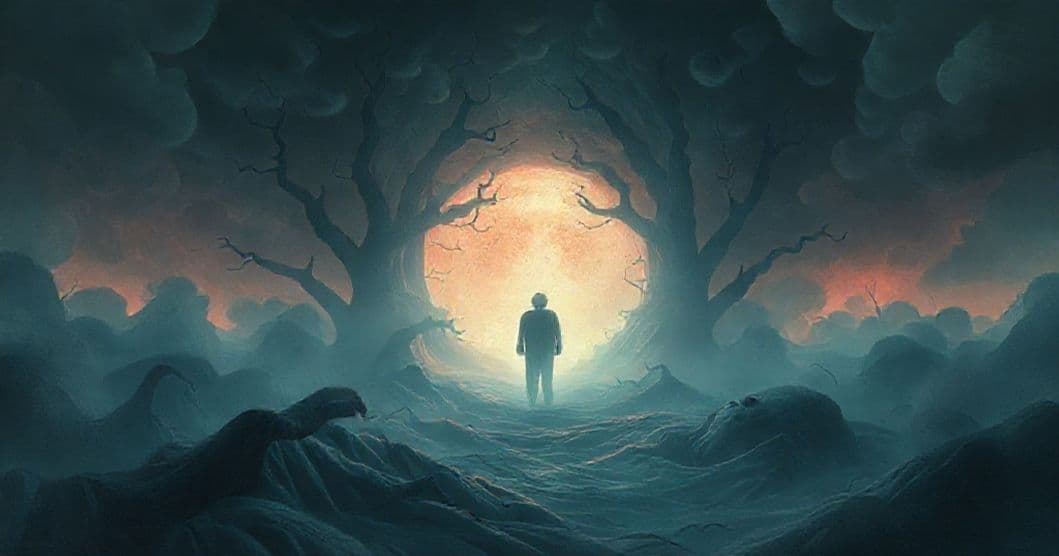Part 1: Dream Presentation
Dreams often arrive unannounced, carrying symbolic messages from our deeper consciousness. Consider this vivid dream experience, where the veil between the conscious and unconscious tore open to reveal a landscape of horror so intense it left the dreamer physically and emotionally shaken. The dream unfolded at 1 am—a liminal hour when the mind’s defenses weaken and the unconscious asserts itself with greater urgency. The dreamer, an adult, awoke to find the nightmare’s residue still clinging, its details too horrifying to fully articulate yet vivid enough to leave lasting emotional reverberations.
I woke at 1 am, heart hammering like a broken metronome, the remnants of a nightmare still clinging to my consciousness like wet moss. For the first time in years, I couldn’t recall the specifics of my sleep, only the visceral dread that had clawed its way into my waking mind. This was no ordinary dream—it was a visceral descent into moral horror so profound that my adult self recoiled at the mere memory. I’d done things so abhorrent, so cruelly detached from any shred of humanity I recognized, that even my most fevered imagination would never conjure such acts. The themes churned in my gut: unspeakable violence, gory torture, the disappearance of children, the deliberate destruction of a family unit, and then… nothing. No remorse, no trace of feeling, just a cold, calculated moving on as if I’d committed a minor inconvenience rather than unspeakable atrocities. The nausea returned as I tried to piece it together, and I couldn’t bring myself to share the details, though the urge to explain the terror felt necessary. In the dream, when I gazed into a mirror, the face staring back wasn’t mine—a stranger’s visage, blank and unreadable, which now replays in my mind like a broken film reel. I sat there, a grown man, paralyzed by the horror of my own imagined actions, unable to turn off the light that illuminated this hellscape of my mind. It felt like hereditary trauma amplified to a nightmarish degree, and I was left trembling, desperate to understand why my brain would construct such a thing—and how to escape its shadow.
Part 2: Clinical Analysis
Want a More Personalized Interpretation?
Get your own AI-powered dream analysis tailored specifically to your dream
🔮Try Dream Analysis FreeSymbolic Landscape: Unpacking the Nightmare’s Imagery
The dream’s symbolic elements form a constellation of psychological distress and existential unease. The act of destroying a family represents a profound attack on one’s sense of connection, stability, and belonging—core human needs. In dreamwork, family units often symbolize the dreamer’s internalized values, relationships, and sense of self. To destroy this structure may reflect a subconscious fear of losing control over these domains or unresolved conflicts within personal relationships. The missing children imagery taps into primal fears of vulnerability, innocence lost, and responsibility. Children in dreams frequently represent potential, creativity, or untapped aspects of the self; their disappearance suggests a sense of existential loss or fear of failing to protect what is most precious.
The gory violence and torture serve as a raw expression of repressed anger, rage, or moral conflict. These elements are not literal but metaphorical, representing emotional
